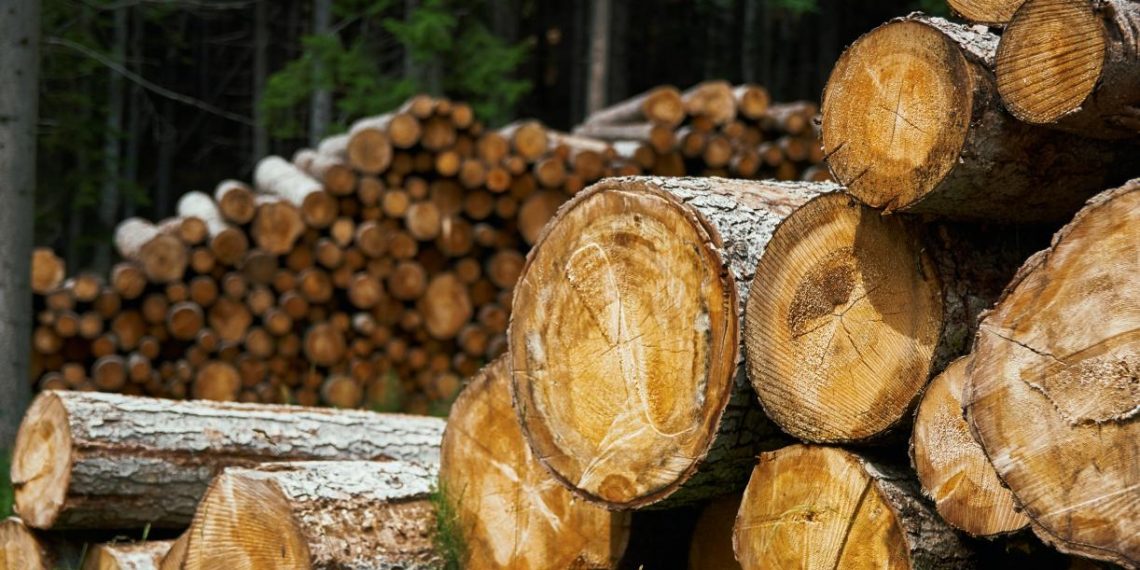Urban building area is rapidly expanding. In fact, global building floor area could double by 2060. Building and maintaining urban infrastructure requires high amounts of energy and material resources. Accordingly, the way cities choose to build — and what materials they build with — will impact to what degree sustainability targets are achievable or even realistic. Cities need to ensure that they are using materials that tread lightly on the planet and can be renewed. This points to a role for wood.
When harvested wisely, wood can support the economies, communities, policies and technologies that keep working forests intact and ward off the pressure to convert them to other land uses. Such practices can even help protect the world’s most biodiverse and precious primary forests. But to realize the benefits of building with wood, the production, distribution, procurement and use of this vital input must be ecologically sound.
Some cities have embraced local, regional and reclaimed wood to reduce waste, increase transparency and promote circular economies. While such efforts represent a great start, they are not sufficient. Small-scale local initiatives hardly make a dent in the huge amounts of new and non-local wood that cities consume from around the world. For example, the European Union and United Kingdom imported over 1 million tons of primary tropical timber products in 2020. Amazonian ipe winds up as park benches in Montreal; Canadian hemlock turns up as timber framing in Beijing.
It is essential for cities to understand the impacts that different sources of wood may have on people, the environment and the climate. This necessitates a holistic, integrated, qualitative system that assures that wood is used to support environmental prosperity.
A new digital platform, the Cities4Forests’ Sustainable Wood for Cities Guide, represents an important step in this direction. The guide is the product of a multi-year collaboration between procurement specialists, foresters, urban planners, project managers, ecologists and conservationists. It lays out several specific sourcing strategies that can help protect and conserve forests, support sustainable forest management, promote local production and reuse, and build resilience into urban spaces and beyond. Together, the pathways can provide a common ground to compare the impacts of diverse sourcing strategies and procure wood in a way that supports both cities and forests around the world.
8 Pathways to Sustainable Wood For Cities
1. Forest Certification
Certified forests are forests that have been audited by a third party for compliance with world-recognized standards of sustainable forest management. Their products are traceable by chain of custody through the supply chain. Wood marked as certified by the Forest Stewardship Council (FSC) or the Programme for the Enforcement of Forest Certification (PEFC), for example, seek to assure purchasers that the product is legal and sustainable in a way that can be communicated to the public.
2. Social Forestry
In social forestry, the purchase of wood and other forest products sustains community forest management enterprises and local livelihoods that are invested in long-term forest stewardship. In many cases, social forestry supports Indigenous communities to continue their work as the world’s best forest defenders. The community-managed forests that provide high-value timber to cities through Cities4Forests’ Partner Forest Program are an example of social forestry.
3. Species and Grade Selection
Overreliance on a few high-demand wood species, such as ipe or western red cedar, creates unneeded waste and forest degradation. It causes well-managed, diverse forests to be undervalued and useful species to be overlooked while others are extracted too quickly. Choosing wood species and grades with greater intention can vastly reduce the pressure on forests and meet increasing demand. Brooklyn-based design-fabrication practice and wood products manufacturer Tri-Lox works with lesser-known species from regional forests, as well as urban tree removals that would otherwise end up in chippers or landfills.
4. Strategic Geography
“Strategic geography” means sourcing wood from jurisdictions that are pursuing specific sustainability outcomes, such as the enforcement of laws against illegal logging or the protection of endangered systems and species. Organizations and initiatives including Preferred by Nature, the Forest Legality Initiative and Forest Trends provide current information to help judge jurisdictional merit and risk. Wood purchases that use strategic geography can reward regional best practices in sustainable forest management.
Of course, even high-risk jurisdictions may encompass forest-positive actors who follow best practices and who can be identified by other pathways, such as social forestry and forest certification.
5. Local and Urban Wood
Cities routinely fell trees and plant new ones every year. Utilizing these trees as a valuable wood source can save trees from chippers or landfill. As a result, they would be able to store carbon, create skilled jobs and return prized, useful products to the community. The Urban Wood Network comprises many organizations working with cities to salvage and valorize urban tree removals.
6. Re-use and Long Life
Wood stores carbon for as long as the material is intact and can often be repurposed after initial use, alleviating the need for virgin materials and presenting opportunities for local and circular economic activity. These benefits can be captured and extended through projects that use reclaimed wood or design for eventual disassembly and reuse, rather than send good lumber to decay in the landfill. Baltimore’s Brick & Board, Vancouver’s Unbuilders, Portland’s Good Wood, Cambium Carbon and many others are demonstrating the creative possibilities of this approach.
7. High-efficiency Production
The many tools and processes available to turn trees into building components differ in cost, speed, convenience and efficiency in terms of wood waste and carbon emissions. High-efficiency production reduces carbon emissions associated with wood and energy waste at all stages of the harvest and manufacturing process. For example, a solar kiln can dramatically reduce the energy required to dry green wood, while new lamination processes reduce wood waste and pressure on forests by recovering fiber from the entire tree.
8. Net Carbon Accounting and Life Cycle Analysis
Conducting a Life Cycle Assessment means taking a comprehensive approach to calculating the net carbon profile of a wood package, accounting for forestry practices, all production processes, transportation and manufacturing. It can be a vital tool for discovering unforeseen and counterintuitive impacts. To make global progress on climate change, cities will need to continually invest in and refine these processes, their accuracy and systemic relevance. Multiple tools exist to help teams get started, such as the Embodied Carbon in Construction Calculator.
3 Cities Putting Wood to Work on Sustainability Objectives
While many cities have already put some of these pathways into practice, three cities in particular are taking a holistic approach to wood that could have far-reaching positive impacts.
Montreal, Canada’s urban wood recovery program may be the largest in the world. In 2019, the city felled 18,000 of its one million ash trees due to infestations of the emerald ash borer, an invasive insect. While many of the trees were chipped or left to decompose, about 2,000 tons of trees from the city’s large parks were turned into lumber, pulp and paper. The social enterprise Centre de valorisation du bois urban (urban wood valorisation center, or CVBU), sent about 100 trucks to retrieve the logs and deliver them to local mills, designers and fabricators. Some 200,000 board feet of lumber — twice the amount covering the Brooklyn Bridge Promenade — became chairs, desks, flooring, toboggans and skating rink boards, saving good wood from the chipper, supporting local industry and building awareness of the value of the urban forest.
The City of Portland, Oregon, has started a sustainable wood pilot that connects wood to social and economic objectives. Working with local environmental consultancy Sustainable Northwest, the city is using the Sustainable Wood for Cities platform to test-drive wood-package assessments and inform procurement contracts for city projects such as new park infrastructure and affordable housing developments. At the same time, it is exploring how wood’s storytelling quality can guide pathway selections for desirable outcomes.
“We are asking the project teams, what values and what stories do you want to express through the wood decisions?” asked Sustainable Procurement Program Manager Stacy Foreman. “For example, do you want to tell a story about using urban wood? Because maybe the project site had to cut down some trees that the project could reuse.” Similarly, other teams might wish their projects to show off local or regionally-sourced timber, which could elevate Indigenous-managed forestry or minority-owned wood reclamation businesses. Portland already has policies to ensure diversity in construction contracting, and this approach could extend those efforts to construction supplies.
In Canada’s British Columbia province, Vancouver is engaging certified wood, net carbon accounting and strategic geography to address its need to grow. The city faces a housing crisis, but is also committed to reducing its embodied carbon from construction by 40% by 2030. According to City Green Building Engineer Patrick Enright, this is an opportunity to build low carbon. Upcoming by-laws shaped by Sustainable Wood for Cities will phase in requirements to source from either certified or Indigenous-managed forests. Importantly, most of the province’s commercial forests will qualify for use, which will allow Vancouver to be an important market for high-value, regionally-produced timber.
Turning a New Leaf: Wood for an Ecologically Prosperous Future
A common theme emerges in each of these three examples: cities are moved by local priorities, values and stakeholders to start adopting sustainable wood procurement practices. But the positive impacts can be much greater if these can be adopted at scale. Our rapidly urbanizing world faces unprecedented environmental challenges, and the building industries on which this growth depends rely on globally traded materials. Given this, it’s hard to overstate the importance of making the most sustainable use of forests regardless of their proximity to cities. Cities have a golden opportunity to carve out a triple win for the climate, the urban environment and forests worldwide. Now, they must use the pathways in front of them to seize this opportunity.



